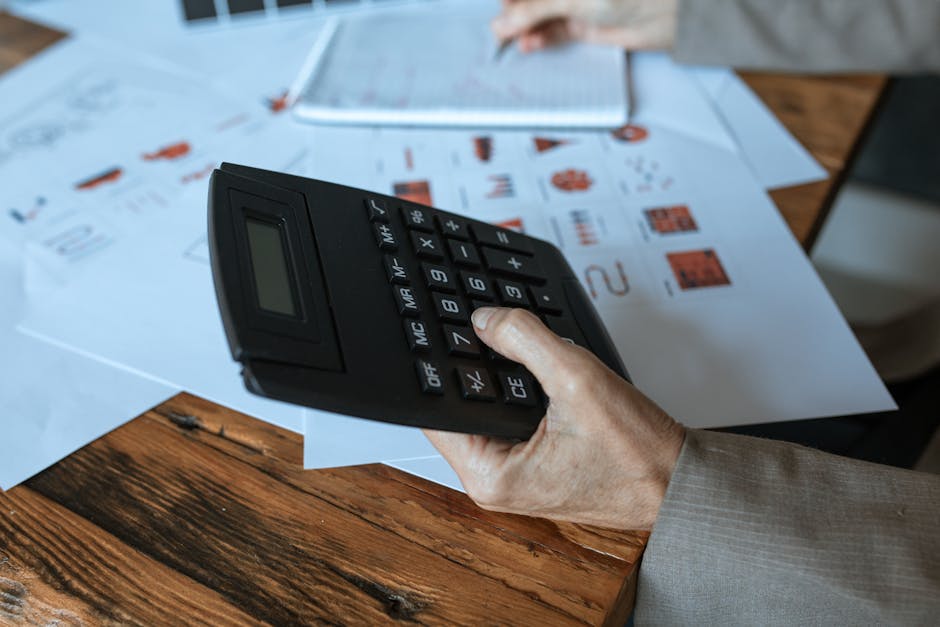Three years ago, I started working as a self-media blogger in my spare time while working full-time in the technology industry. In my first year, I woke up with a lot of anxiety because I felt like I wasn't going to get anything done in the 16 hours I was awake. But since then, I've learned a few tricks. In this video, I will share with you 8 methods that can really help you complete your plan. First, create a bird’s-eye view.
It may sound a bit exaggerated, but listen to me, if you care about self-improvement, you should have the habit of keeping accounts. Track key metrics like spending and net worth over time by recording your income and expenses each month. This all-seeing God's view of my personal finances is easy to use because I have a shortcut set up in my browser.
It provides a clear picture of my current financial situation, and most importantly, it helps me identify problems in my financial situation. This approach has helped me in both my full-time job and my side hustle.
I keep the cockpits and spreadsheets I use to track project status in a folder. You can simply use the sumif function to automatically update the summary data when the data base changes. I look at this report once a week, and when a problem appears in the table, I immediately know where to start solving it. The point here is that investing a little time up front to develop a God's eye view of an aspect of your life can save you a lot of time later because you won't have to do the same calculations manually all the time.
And this matter is actually not complicated.
If you want to lose weight, then your health software is your God's view. Set a reminder to measure your weight every morning when you wake up, and review the data once a week, hoping that your weight curve will develop in the expected direction. The second time management tip is to tick your to-do list. If you've seen The Checklist Revolution, Essentialism, or Matt D'Avella's video on the subject, you probably know that experts from all walks of life, from doctors to pilots to CEOs, rely on this simple Use silly to-do lists to save time and greatly reduce errors.
While there's a good point about what Matt said, I've found that you can make a to-do list for anything.
The following three to-do items have the greatest impact on my life. First, every morning I routinely click the New Day button in my Notion schedule to generate my 6 must-do tasks for the day, which help me start my day full of accomplishments. If you need a template, I'll provide a link below. For example, many viewers are surprised that I still reply to comments on a video I made two years ago.
That's because I won't allow myself to jump to the next task without responding to my audience messages.
At work, I have a time slot every Monday morning in my calendar for planning meetings for the following week, and a list of things to do below to remind myself to confirm all meeting information for that week and review current projects. Progress, write weekly reports, etc. Behind each of these 145 videos that have been uploaded is a to-do list to ensure that my audience, which is you, can experience consistent, excellent video quality. If you're still not convinced, you can make a to-do list for the things you really care about. If you love traveling, create a packing to-do list that will keep you organized and make it harder for you to forget something.
Oh, and this video is not sponsored, but you can support me by paying a subscription to my Google Software Productivity articles . The third technique is what I call the anti-microphone habit. I refer to the McDonald's habit proposed by Ali Abdaal and Mathew Dicks , which is to make use of all your fragmented time.
For example, if you wait for someone at McDonald's for seven minutes, that means you can do seven minutes of work. I like Ali a lot, we are friends, if Ali you and your team are watching this video, don't hate me.
But, according to Andrew Huberman, 99% of people need a changeover time of 2 to 5 minutes to perform optimally. So my personal take on this McDonald's habit is to differentiate between mentally demanding work, like creative work or deep work, and less mentally demanding work, like processing emails or responding to texts.
If I have two meetings back-to-back with only five or 10 minutes between them, I'm not going to use that time to do a highly focused strategic presentation because it will cause me to forget what I was going to say in the next meeting. But emails and messages aren't that important, so it's okay for me to be distracted for a while . Speaking of email, the email-zero workflow has been the most transformative productivity trick for me and many others.
This is simply the golden rule of email management, and this workflow itself was proposed by Jake Kanpp, a former Google employee and author of "Making Time".
It's about when you're dealing with your email, you follow a set of rules or a to-do list. Start at the bottom and work your way up, and for any email you can process in less than two minutes , process it right away and then archive it. If there are emails that take longer than 2 minutes to respond to, give them a "follow up" label. For emails that are assigned to someone else but you are still responsible for the results, give them a "pending" label.
Label. Label emails that you will reuse later as “references”. All other emails can and should be archived. This workflow ensures that you never miss any important emails and clears out all the emails that have been processed. I have made tutorials for Gmail and Outlook respectively, you can check them out later.
The fifth time management technique is the atomic 80/20 rule. If you search the internet for the best morning routine, you'll quickly be convinced to wake up at 6 a.m., work out, stretch, take a cold shower, meditate, walk 10,000 steps, plan your day, write in a journal, and more. If you can finish it before 6:15, you can be considered an efficient person.
I don't agree. What I find really helpful is the 80/20 rule, where 20% of the inputs give 80% of the results. Combined with the key message in Atomic Habits, a small change of 20% over a long period of time can have a huge impact. For example, first, I would set a fixed 45-minute time limit in my calendar to complete all of my morning habits, and then I would use trial and error to find the most effective combination of habits and stick to it. For me, this combination is 10 minutes of stretching, because physical health is the most important thing to me, and then a simple skin care, so that you think I look handsome, and then review what I saved in readwise Finally, make a plan for today on Notion.
In the same way, I no longer try to find the best app or tool. For example, if I want to keep up to date with the latest AI information, then continuing to read a newsletter that specifically reports on AI can better help me achieve my goal. Because if you subscribe to 10 news accounts, you will be overwhelmed by too much information and simply not read anything. Long story short, identify the 20% that's most important to you, and then find a way to stick with it over the long term.
Sixth, use AI with purpose.
ChatGPT and Google Bard undoubtedly have great potential to help us produce more in less time, but at the same time, if you don't use them blindly for your specific needs , AI tools will make you feel overwhelmed. Consider two scenarios. Scenario A: I tell you that Google Bard can help you book flights and hotels, search for YouTube videos, and also documents and cloud storage. Oh, and these are actually true. In scenario B, I tell you to type in @Gmail, and you can have Bard distill all your unread emails to you every morning .
Which situation is more likely to motivate you to take action? It should be B, right? Because it’s specific and more relevant to you. Instead of getting lost in posts like “100 Best ChatGPT Instructions” or “Use These 50 AI Tools to Boost Your Productivity 10 Times” , I recommend you do these three steps. First, identify 1-3 repetitive and time-consuming tasks in your job, and second, design instructions for those tasks.
Or you can find it from an existing instruction library, such as copying it from GitHub's instruction library and then modifying it slightly. Or go watch my 8-minute GhatGPT prompts tutorial video. When you find that this prompt can stably output high-quality content, save it in your own prompt database and reuse it as needed. Let me share with you some examples from my work. I save prompts that help me write weekly reports, interpret financial reports, and prepare topics for coffee chats.
You can watch my ChatGPT efficiency video to learn about other uses. I also have a command that can rewrite my YouTube video copy into a text version of the blog, which is simply a cheating operation. In my personal life, ChatGPT can also help me generate pickup lines, no, recipes. I use ChatGPT to learn how to cook. The seventh time management tip is recovery forecasting.
You may not know this, but one of the side effects of growing up in Hong Kong is that I love going out at night to dance with my friends.
Of course, I am also efficient when dancing. Now that I'm in my 30s, hangovers are really bothersome. So if I know I'm going to be out on Friday night, I'll actually book a recovery time on my calendar from 9 to 12 noon on Saturday . It sounds silly, but paying attention to this detail really helps me manage my week because it means I'm forced to move things I would have done at that time to other times.
If something has to be done at that time, I won't go out the night before to keep up with the trend, but stay home. Pro tip, I find this useful for traveling for work too. By planning my commute and jet lag, I don't tire myself out when I travel.
The eighth time management tip: grab and organize. This kind of thing happens all the time.
When I got home from get off work and was thinking about the topic of my next video, I suddenly received an email from my boss and a message from a colleague asking me out for coffee. I don't do these things right away because I'm likely to forget the other two by the time I get to the first one. I'll put these three things into my to-do app first, and then when I get home and sit in front of my computer, I'll put these tasks where they belong.
I put the video selection in the Notion database, process the emails according to the mailbox zeroing workflow, and then reserve time on the calendar to have coffee with colleagues. If you want to learn more about this powerful and often overlooked productivity technique, check out this time management system video.
See you in the next video. In the meantime, have a great day!
CrowdWorks - Make 100% Free AI Influencer Ads
https://warriorplus.com/o2/a/zgs1rph/0
FRESH
https://warriorplus.com/o2/a/jgnzcbx/0




No comments:
Post a Comment